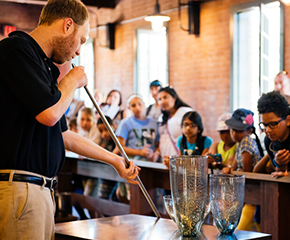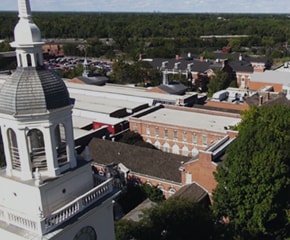
Observation Deck
Ride the elevator up eight stories to the Observation Deck for a bird’s-eye view of Ford’s living roof and the massive network of production facilities that make up the Rouge Complex.
Spanning 10-plus acres, the roof is made up of tens of thousands of sedum plants, a perennial groundcover also known as stonecrop. Its main function is to collect and filter rainfall as part of a natural stormwater management system. The roof is capable of cleaning up to 4 million gallons of water every year. It also decreases the building’s energy consumption by 7 percent and improves air quality by as much as 40 percent.

The Observation Deck also highlights the extensive network of environmental innovations throughout the Rouge Complex, including a naturalized habitat, porous pavement, solar arrays and energy-saving photovoltaic panels. Enjoy an excursion into a realm where environmental innovation and industrial production work together to put an entirely new face on modern manufacturing.


